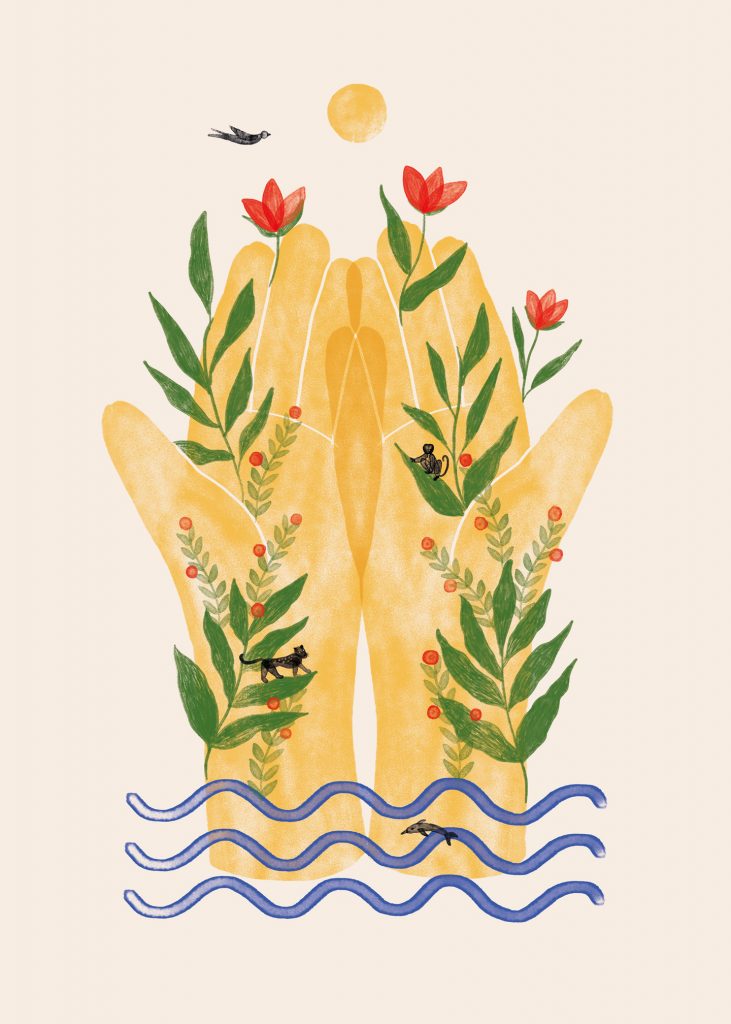Chapter 1: Science and Story
Acknowledging the Land
The story of our relationship to the earth is written more truthfully on the land than on the page. It lasts there. The land remembers what we said and what we did. Stories are among our most potent tools for restoring the land as well as our relationship to land.
~Robin Wall Kimmerer, Braiding Sweetgrass, p. 343
This is a writing textbook. And even more specifically, it’s a scholarly writing textbook. So why are we starting by reflecting on the land and our relationship to it? Because the scholarly conversations in our disciplines are written on the land. This is where everything begins, and where everything returns. As scientists, scholars, and members of our communities, we have a duty and a responsibility to actively participate in the important process of decolonization and reconciliation with Indigenous peoples. This begins by acknowledging Indigenous land rights and presence, both historical and contemporary, as well as confronting our own place on these lands.
Before we get started, take a moment to watch and reflect on this video short talk by Nikki Sanchez.
Exercise – Native Land Digital
- Locate yourself on this map.
- Whose lands do you live on? Is this different from the lands you grew up on?
Questions for Reflection
You may want to free-write or jot down your responses to these prompts in a notebook or journal.
1. Reflect on a place that has meaning for you. It can be a place you visit every day, somewhere you went as a kid, a place you associate with a person, or an important time in your life. It can be near your home or it can be far away.
-
- What does it look like?
- What does it smell like? Feel like?
- What does the light look like? Why is it important to you?
2. Which nation’s territory were your grandmothers born on?
Student Narrative
The place that I am still visiting in my dreams is the place where I grew up. It is a small close-knit village located in the extreme northwest of Russia just by the river called Tuloma. The village is surrounded by a beautiful forest with mushrooms and berries that can be picked up every summer. I remember me and my childhood friends building small huts inside the forest and hiding there when it is raining. It smells like wood, campfire, rain, and fresh grass. It is the place that I always want to come back to from my childhood, even if only for a while.
References
Kimmerer, R. W. (2013). Braiding sweetgrass: Indigenous wisdom, scientific knowledge and the teachings of plants (First ed.). Milkweed Editions.
Sanchez, N. (2019). Decolonization is for everyone. [Video]. TEDxSFU. https://www.youtube.com/watch?v=QP9x1NnCWNY
Media Attributions
- In-our-hands-silvana-pacheco-social-media © Silvana Pacheco Duncan is licensed under a CC BY-NC-SA (Attribution NonCommercial ShareAlike) license
- Think © Kirby Wu is licensed under a CC BY (Attribution) license
Something that is academic in nature.
Decolonization may be defined as the active resistance against colonial powers, and a shifting of power towards political, economic, educational, cultural, psychic independence and power that originate from a colonized nation’s own indigenous culture. This process occurs politically and also applies to personal and societal psychic, cultural, political, agricultural, and educational deconstruction of colonial oppression.
Per Eve Tuck and K. Wayne Yang: “Decolonization doesn’t have a synonym”; it is not a substitute for ‘human rights’ or ‘social justice’, though undoubtedly, they are connected in various ways. Decolonization demands an Indigenous framework and a centering of Indigenous land, Indigenous sovereignty, and Indigenous ways of thinking.
SOURCE:
1. The Movement for Black Lives (M4BL), “Glossary.”
2. Eric Ritskes, “What Is Decolonization and Why Does It Matter?”
The Truth and Reconciliation Commission report “defines reconciliation as an ongoing process of establishing and maintaining respectful relationships. A critical part of this process involves repairing damaged trust by making apologies, providing individual and collective reparations, and following through with concrete actions that demonstrate real societal change” (Honouring the Truth, 2015, p. 16).



